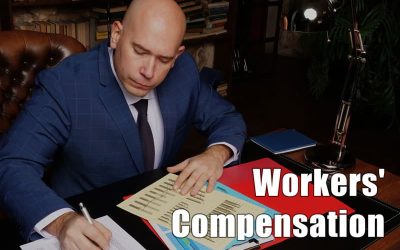Employees who fall ill or are injured while on the job in the U.S. are covered by the company’s workers’ compensation insurance. Medical record retrieval and medical records review are important processes that help find medical evidence that enables the insurer to take a fair decision regarding workers’ compensation coverage. An important consideration in any organization is whether the employer can fire an employee who is on workers’ compensation leave. Most states have laws that prohibit employers from taking action against an employee who files a workers’ compensation claim. Employers can legally terminate the employee as long as the termination isn’t retaliatory, and is based on misconduct that is not related to the workers’ compensation claim. Employers must be very careful and have appropriate protocol in place to avoid violating state and federal laws. They can consult a good workers’ compensation attorney before resorting to any hasty action.
Fo
If you are an attorney handling workers’ compensation cases, MOS Medical Record Reviews provides value-added medical record review solutions.
Important Workers’ Compensation Facts
Even in “at will” states, where both employer and employee can terminate the employment relationship for any reason, it doesn’t always apply to workers’ compensation cases. Employers cannot threaten to fire an employee if he/she wants to claim a work injury, according to labor laws. Laws protect employees out on workers’ comp leave, but employers can fire a worker receiving benefits in the following instances.
- When the employee is a key employee such as manager, supervisor, or the only worker in a certain department. Key employees are those without whom you cannot effectively run the business.
- When the employee is off for an extended period of time and the employer needs someone to carry out that job.
- An employer can let an employee go if they can successfully show that the termination was unrelated to the workers’ compensation claim. This is when an employee engages in misconduct that would permit termination for any employee under the employer’s policy. Examples include workplace violence, theft, or sexual harassment. Timing and proper documentation are vital to demonstrate this.
In most states, workers’ compensation laws are only benefit statutes that provide some percentage of salary continuation and medical benefits. These statutes on their own do not provide leave. In many states, workers’ comp statutes are not job protection statutes. This means that employers can let workers go who are on workers’ comp leave. The important thing to remember is that employers cannot fire an employee just because he/she got workers’ comp benefits.
The duration of the workers’ comp leave is determined by:
- Your company policy that governs disability leave
- FMLA or Family and Medical Leave Act for companies with 50 or more employees
- Federal, state, and local disability determination laws
- Employees on workers’ compensation may also qualify for leave under the ADA (Americans with Disabilities Act) and /or FMLA. In such cases, the leave may become job protected.
Employees terminated on workers’ comp leave continue receiving their benefits. If an employee is terminated while on workers’ comp leave, he/she continues to be eligible for benefits until the doctor certifies they can return to work. Continued employment is typically not a prerequisite for continued workers’ comp benefits.
Workers with injuries or illnesses who are on workers’ comp leave should provide return-to-work dates. Employers should have documentation from the employee’s healthcare provider stating an expected return-to-work date. Employees must be required to advise in advance if they are not returning on that date, and provide a revised expected return date; and also if the employee is not returning. Employees who have been cleared to return to work but refuse to do so, could be terminated.
Key Facts Employers Must Take Note of
Demonstrate that the employee is incapable of returning to work: For this, you need sufficient medical evidence that can prove the worker’s disability. It may be possible to terminate an employee on the grounds of excessive absence provided the employee is not covered under the FMLA (Family and Medical Leave Act) or ADA (Americans with Disabilities Act). Employers must take all necessary steps to prove that the termination is not due to a workers’ comp claim but the excessive absenteeism on the part of the worker and the failure to return to work.
Ensure that you comply with FMLA mandates: Under FMLA, employers with more than 50 employees are required to provide up to 12 weeks of unpaid leave to an employee who has a serious health issue, and has worked in the company for at least 12 months, and at least 1,250 hours during those months. Before proceeding with the termination, make sure that you have complied with the FMLA’s requirements and that the leave period has been exhausted.
Consider whether the worker has a qualified disability: ADA provides certain protections for injured employees who develop a disability that prevents them from performing an activity at the workplace such as lifting or walking.
Make sure to review the employee handbook that you issued: Before terminating an employee, review the agreed upon information in your employee handbook to make sure that the worker’s rights are not violated.
Several laws and different facts and circumstances come into play when it comes to terminating an employee who is on a workers’ comp or medical leave of absence. Employers should ideally consult employment counsel before firing employees in such cases. Many U.S. states have workers’ compensation laws that allow employees to sue in regular court (not in a workers’ comp forum) claiming that they were fired in retaliation for claiming workers’ compensation benefits. Employers should attach priority to try and get their employees back to work. In cases where the worker refuses to return to work in spite of being cleared via comprehensive medical records review and other appropriate investigations, the employer may be able to terminate the employee legally.
Get in touch with us for dedicated medical records review for workers’ compensation.





